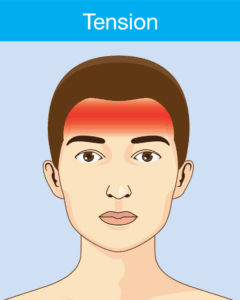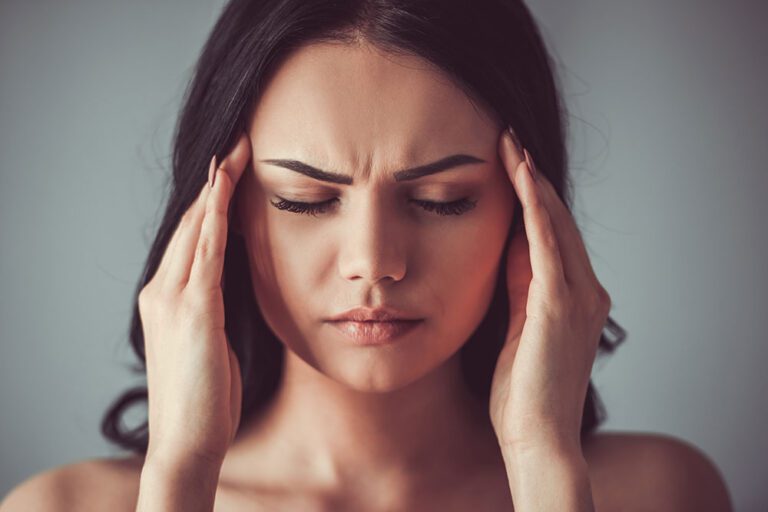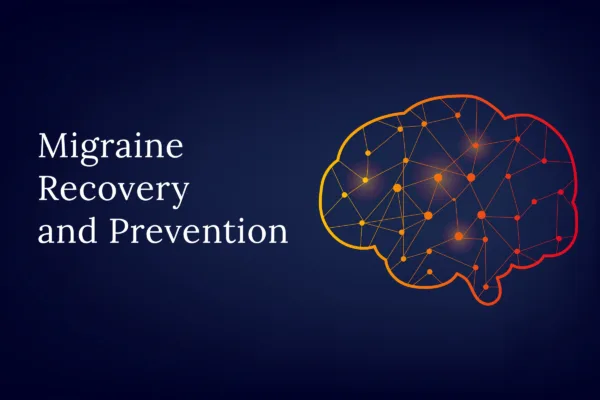Whether you get intense headaches or migraines once in a blue moon or on a regular basis, you already know how debilitating and frustrating they are. If you suffer from strong headaches, it is important to know what type of headache you are dealing with. Two of the most common types of primary headaches are tension headache and migraine. But, how do you tell which one you have? Let’s take a look.
What’s the difference between a tension headache and a migraine?
A tension headache is the most common type of headache, also known as a rebound headache. It usually feels like a tight band wrapped around your head. Tension headaches can occur once in a while or frequently, but their pain is not as debilitating as the pain of migraine attacks.
On the other hand, migraines are less common, and cause a severe and throbbing headache, which often comes with symptoms including nausea, sensitivity to light and sound, and visual disturbances.
What are the symptoms of a tension headache?
Tension headaches usually last for a few hours but can persist for several days. They are often described as chronic if they occur for 15 or more days per month over a period of at least three months. Although tension headaches are less severe and do not typically cause significant disruption to daily activities, chronic tension headaches can still disrupt one’s productivity and well-being.
It is typically described as a dull, aching pain that may feel like a tight band around the head. The pain is usually bilateral (affecting both sides of the head) and does not pulsate.
You may be experiencing a tension headache if you have the following symptoms:
- Headache pain on both sides of the head
- The pain is distracting but not severe
- The headache pain feels like tight pressure exerted on the head (as opposed to throbbing pain).
- You may also have soreness in your temples, and tightness in your neck and shoulder muscles
What are the symptoms of a migraine headache?
The exact cause of migraines is not fully understood, but they are believed to be caused by a combination of genetic, environmental, and neurological factors. Triggers such as certain foods, hormonal changes, stress, lack of sleep, and sensory stimuli can often precipitate a migraine attack.
Migraines can be debilitating, making it difficult to perform daily activities and significantly impacting the quality of life. The intense pain and associated symptoms can require rest and isolation until the episode subsides.

You may be experiencing a migraine if you have the following symptoms:
- Moderate to severe throbbing or pulsating pain
- The headache pain is often worse on one side of the head
- Sensitivity to light, sounds, and smells
- The headache pain gets worse if you are moving
- Nausea
- Visual effects, also called «aura» such as flashing lights.
- Tingling sensation in the face before the headache starts.
What are the causes of tension headaches and migraines?
These two types of headaches also have different causes. Typically, tension-type headaches are triggered by psychological stress or fatigue. In addition, tension headaches cause pain and tightness in the muscles of the neck, shoulders, and jaw (TMJ) that are felt along with the headache.
When it comes to migraine headaches, their exact causes are still unclear. However, scientific studies have shown some genetic and environmental causes, as well as changes in certain brain chemical levels. In addition, migraine headaches can be triggered by factors such as hormonal changes, strong smells, changing weather patterns, and bright lights.
What is the treatment for migraine headaches?
One of the best prevention strategies for migraines is identifying your headache patterns and triggers and avoiding them. This can include caffeine, alcohol, stress, lack of sleep, and weather changes.
In addition, migraines can be treated at the onset with abortive medications, which you can get over-the-counter or ask your doctor to prescribe them to you.
If you get debilitating migraine headaches on a regular basis, there is also the option of taking preventive prescription medications for migraine. It is important to talk to your doctor about your migraine symptoms to come up with the best treatment strategy for your symptoms.
Is it possible to get both migraines and tension headaches
While it is rare, it is possible to have coexisting migraine and tension-type headaches. Other terms used to describe this condition are transformed migraine and chronic daily headache. Typically, people suffering from this condition must see a headache specialist to create an appropriate treatment plan.
Getting the right diagnosis
If you are still unsure about which headache type you have, it is essential to consult your healthcare practitioner to receive an evaluation and the correct diagnosis and treatment. Your doctor will carry out an assessment and evaluate your symptoms according to the criteria in the International Classification of Headache Disorders (ICHD), as well as a physical exam to rule out any other conditions.


















